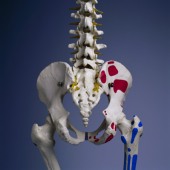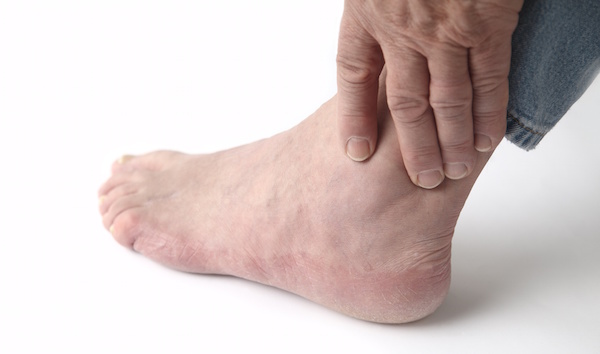
WEDNESDAY, Feb. 24 (HealthDay News) — A new drug to fight osteoporosis, the bone condition associated with aging and debilitating fractures, reduces the risk of fractures and the risk of some breast cancers, heart disease and stroke, according to a new study.
But, like other anti-osteoporosis drugs already on the market, the drug — called lasofoxifene — also boosts the risk of blood clots, the researchers found. Lasofoxifene, proposed brand name Fablyn, is not yet approved by the U.S. Food and Drug Administration.
Overall, lasofoxifene looks good, according to lead study author Dr. Steven Cummings, professor and director of the San Francisco Coordinating Center at the University of California San Francisco.
But Dr. Carolyn Becker, who wrote an editorial accompanying the study published in the Feb. 25 issue of the New England Journal of Medicine, is taking a wait-and-see approach. “It may turn out to be a dynamite drug, but it’s not anything I would rush in to use as a clinician,” she said. “There are too many unknowns.”
For the study, Cummings and his team assigned 8,556 women who were aged 59 to 80 and had osteoporosis to take a daily dose of the drug (either 0.25 or 0.5 milligrams a day) or a placebo for five years. All had a bone mineral density T score of minus 2.5, considered osteoporosis.
The new drug is in a class of medications known as selective estrogen-receptor modulators (SERM), which act like estrogen in some tissues but anti-estrogen in other. “They act like estrogens when binding to bone cells and don’t act like estrogen in the breast [thus not ‘feeding’ any cancers of the breast],” Cummings said.
Another SERM, already on the market, is raloxifene (Evista).
In the study, the researchers found that lasofoxifene “reduces the risk of all fractures (spinal and elsewhere), breast cancer, heart disease and stroke,” Cummings said. “Breast cancer by more than half, nonspinal fractures by about a quarter, which is similar to what other drugs have done, stroke and heart disease by a quarter to a third.”
The results he cites are all for the higher dose, 0.5 milligrams a day, when compared to placebo. The higher dose worked better, they found, and is the dose planned for clinical use.
When Cummings looked at adverse events during the follow-up, he found deaths were comparable in the high-dose and placebo group (73 and 65), but more deaths occurred in the low-dose group (90) from any cause.
More women taking the drug developed lung cancer, too — 28 compared to four in the placebo group. Cummings said that may be related to chance.
Blood clot risk more than doubled on the drug, they found, a risk similar to what is found with estrogen and other SERMs, although the absolute risk was still small.
“The big news for osteoporosis is that lasofoxifene also prevents the fractures that cause most of the disability,” Cummings said, referring to non-spinal fractures such as hip, upper arm and pelvis.
But Becker pointed out in her editorial that this effect did not kick in until five years, and the absolute risk reductions were small.
Women with osteoporosis should first consider drugs known as bisphosphonates (Fosamax and others), Cummings said, turning to SERM drugs if they are considered at higher risk.
Cummings has reported receiving consulting fees from pharmaceutical companies including Pfizer, which is developing Fablyn. Becker reports no disclosures.
More information
To learn more about medications for osteoporosis, visit the National Osteoporosis Foundation.

